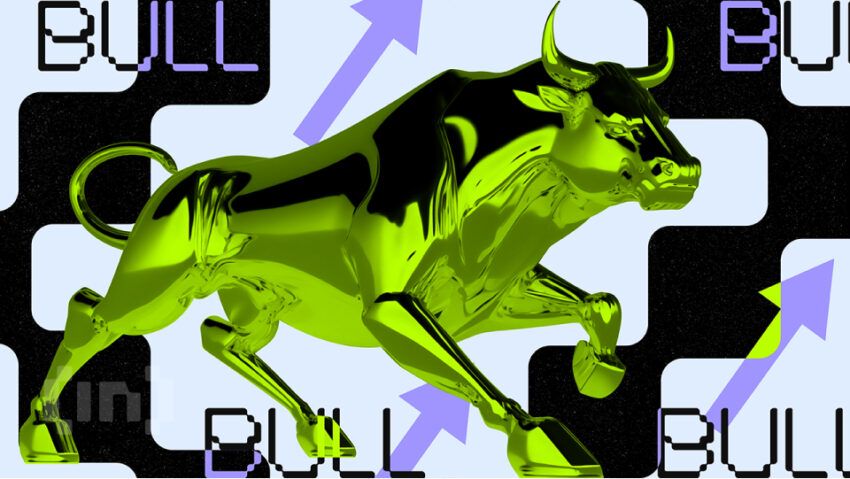Five possible triggers for the next Crypto Bull Run
What new forces could drive the next crypto bull run? BeInCrypto asked some industry experts for their opinion.
2021 was a boom year for the crypto markets. It was the year when crypto, blockchain and web3 took center stage. Facebook renamed Meta, banks moved into the space, and NFTs were on the tip of everyone’s tongue.
The crypto bull in 2021 can be attributed to many things. Institutional adoption and acceptance of cryptocurrencies by big brands gave the sector a new sense of legitimacy. Low interest rates during the COVID-19 pandemic led to inflationary fears. Therefore, investors turned to alternative investments such as cryptocurrencies. During the COVID-19 pandemic and subsequent shutdowns, most people spent more time online. This once-in-a-generation event also provided the perfect petri dish for crypto to gain momentum.
Since the rolling disaster that was 2022, the industry has been looking for the next source of growth. BeInCrypto asked some experts what could drive the next sustained market rally.
Bitcoin Halving
Bitcoin halving happens every four years, when the number of new bitcoin miners can mine is cut in half. This limits the total supply to 21 million. This event is programmed into the Bitcoin protocol and is designed to limit the total supply to that number. The next halving will take place in or around April 2024.
“It is the expectation of the halving of Bitcoin by investors in the second half of 2023 that could become the main positive stimulus for the market, which should provoke a change in the global trend to an upward one,” Gracy Chen, CEO of cryptocurrency exchange Bitget, told BeInCrypto . “After halving, the price of bitcoin always increases and other cryptocurrencies follow it.”
Protocol tool
One trend that experts predict in the upcoming crypto bull market is a shift towards emphasizing the utility of crypto protocols. This means that investors will focus more on how cryptocurrencies can be used practically in real-world situations rather than solely on their speculative value.
“While previous bull markets may have been driven by hype and speculation around certain tokens or projects, I believe investors are becoming smarter and more discerning in their investment decisions,” said Eric Chen, CEO and co-founder of blockchain protocol Injective, in an interview with BeInCrypto.
“As more people enter the crypto market and focus their attention on cryptocurrencies, there will be greater emphasis on the actual value that protocols bring to the table. Investors will look for protocols that solve real-world problems and provide tangible benefits to users, Chen added.
Instability and inflation
Bitcoin has had several periods where it has been the world’s best asset. BTC has already risen over 60% this year, according to CoinMarketCap. The deflationary performance is likely to get investors talking about crypto, William Zielke, Chief Revenue and Chief Marketing Officer at payment service provider BitPay, told BeInCrypto.
“On a macroeconomic level, inflation is nowhere near the end, and with the latest rate hike by the Fed, investors continue to express caution,” Zielke explained. “Bitcoin, in particular, is emerging as a hedge against inflation and the growing banking uncertainty, so we’re seeing an increase in price in part due to investors seeking protection. I think we’ll continue to see crypto re-enter the conversation as markets search for stability . The market backdrop right now provides an opportunity for crypto to regain its moment on the stage amid so much volatility.”

DePINs
Decentralized Physical Infrastructure Networks, or DePINs, are networks that use blockchain and other decentralized technologies to manage physical infrastructure. This can include things like power grids or transport systems. Instead of having one central authority in charge, each device or node in the network can communicate and share resources with each other directly, making the infrastructure more efficient and less likely to fail.
“While the largely nascent sector is just beginning to explore its true capabilities, I’ve seen a lot of curiosity for it,” Max Thake, co-founder of blockchain network peaq, told BeInCrypto. “Its potential to disrupt rigid industries that have seen little real competition in recent decades is giving it a lot of eyeballs. More and more projects seem eager to explore it. It’s a welcome development because, in my opinion, real services and value exchanges are there blockchain’s real usability is, not in trading .jpeg files. DePINs zoom in exactly on the real world, and I think their model is the best chance for actual adoption that web3 has ever had so far.”
User design and education
However, Markus Levin, co-founder of the geospatial data company XYO, believes that the industry has a lot to prove after last year. After the dust settles and people start trusting the sector again, it will still come down to fundamentals.
“2022 poked holes in the crypto ecosystem and exposed imperfections that our industry has yet to work through,” Levin told BeInCrypto. “For a new bull run to take us by storm, there needs to be a restored sense of authenticity, security and sustainability in addition to a favorable macro environment.”
“Two major obstacles still remain, user design and education. Blockchain is meant to be accessible to everyone, but the jargon and community language makes it feel overwhelming and exclusive to the average user. If we can focus on reputation and infrastructure building to restore faith in the space and continue to weed out the bad projects that lack utility, the bull run is right within reach.”
Disclaimer
All information on our website is published in good faith and for general information purposes only. Any action the reader takes on the information contained on our website is strictly at their own risk.


